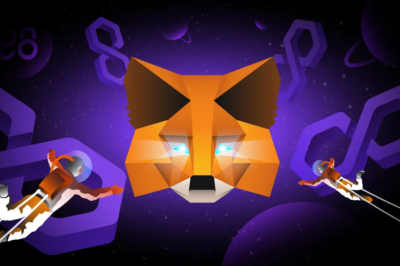
Introduction
In the dynamic landscape of blockchain technology, Polygon has emerged as a significant player, offering a solution to some of the most pressing challenges facing decentralized applications (dApps) and the broader blockchain ecosystem. In this discourse, we delve into the intricacies of Polygon networks, elucidating their architecture, functionalities, and the profound impact they have on the blockchain realm.
Understanding Polygon Networks
-
Origins and Evolution
Polygon, formerly known as Matic Network, was conceived in 2017 by Jaynti Kanani, Sandeep Nailwal, and Anurag Arjun, aiming to address the scalability and usability issues plaguing Ethereum. Since its inception, Polygon has undergone significant evolution, pivoting towards becoming a multi-chain scaling solution for Ethereum-compatible blockchain networks.
-
Architecture and Technology
Polygon employs a Layer 2 scaling solution, augmenting Ethereum’s capabilities by enabling faster and cheaper transactions. Its architecture primarily consists of two key components: the Polygon SDK and the Polygon PoS (Proof of Stake) chain. The SDK facilitates the creation of customized blockchain networks, while the PoS chain serves as a scaling solution by processing transactions off the Ethereum mainnet.
Advantages of Polygon Networks
-
Scalability
Polygon addresses Ethereum’s scalability constraints by leveraging sidechains, effectively reducing congestion on the Ethereum mainnet. With its Layer 2 scaling solutions, Polygon can process thousands of transactions per second, significantly enhancing throughput and network efficiency.
-
Interoperability
Polygon networks are designed to be Ethereum-compatible, ensuring seamless interoperability with existing Ethereum-based dApps and protocols. This interoperability fosters synergy within the blockchain ecosystem, enabling fluid asset transfers and interactions across different platforms.
-
Cost-Efficiency
By offloading transactions to Layer 2 solutions, Polygon significantly reduces transaction costs, making decentralized applications more accessible and economically viable. This cost-efficiency is particularly beneficial for microtransactions and low-value transfers, democratizing access to blockchain technology.
Applications and Use Cases
-
DeFi Protocols
Polygon networks have become a preferred platform for decentralized finance (DeFi) applications due to their scalability and low transaction costs. Projects such as Aave and SushiSwap have integrated with Polygon, offering users a more efficient and cost-effective alternative to Ethereum-based DeFi platforms.
-
NFT Marketplaces
The burgeoning market for non-fungible tokens (NFTs) has also embraced Polygon networks, leveraging their scalability and affordability to facilitate seamless NFT transactions. Platforms like OpenSea and Decentraland have expanded to Polygon, catering to the growing demand for NFT trading and digital asset ownership.
Challenges and Future Prospects
-
Security and Decentralization
While Polygon networks offer significant scalability benefits, concerns regarding security and decentralization persist. As a Layer 2 solution, Polygon’s security relies on the Ethereum mainnet, raising questions about potential vulnerabilities and centralization risks.
-
Competition and Market Dynamics
The blockchain space is replete with competing scaling solutions, posing a challenge to Polygon’s market positioning and adoption. Projects like Optimism and Arbitrum offer alternative Layer 2 solutions, intensifying competition and necessitating continuous innovation from Polygon.
Conclusion
In conclusion, Polygon networks represent a compelling advancement in blockchain scalability and interoperability, offering tangible solutions to the scalability trilemma. With its robust architecture, cost-efficient transactions, and burgeoning ecosystem of decentralized applications, Polygon is poised to play a pivotal role in shaping the future of decentralized finance, digital asset ownership, and blockchain innovation. As the blockchain landscape continues to evolve, Polygon stands as a beacon of innovation, driving forward the democratization of finance and decentralized technology.
FAQ’s:
-
What is a polygon network?
A: A Polygon network is a layer 2 scaling solution for Ethereum that aims to improve scalability and reduce transaction costs. It allows for faster and cheaper transactions compared to the Ethereum mainnet.
- Why would I want to add a Polygon network to my applications?
A: Adding a Polygon network can significantly reduce transaction fees and increase transaction speed for your applications. It enables a better user experience and lowers the barrier to entry for users interacting with decentralized applications (dApps).
- How do I add a Polygon network to my wallet?
A: To add Polygon to your wallet, you typically need to navigate to the network settings within your wallet application and manually input the network details including the RPC (Remote Procedure Call) URL, chain ID, and symbol.
- What are the RPC details for the Polygon network?
A: The RPC URL for the Polygon network is usually
https://rpc-mainnet.maticvigil.com/orhttps://polygon-rpc.com/. The chain ID is typically137, and the symbol isMATIC. - Are there any risks associated with using the Polygon network?
A: While the Polygon network has been audited and is generally considered secure, users should be aware of potential smart contract vulnerabilities and risks associated with using any blockchain network.
- Can I transfer assets between Ethereum mainnet and the Polygon network?
A: Yes, assets can be bridged between Ethereum mainnet and the Polygon network using various bridge solutions such as the Polygon Bridge. This allows for interoperability between the two networks.
- How can developers optimize their applications for the Polygon network?
A: Developers can optimize their applications for the Polygon network by utilizing layer 2 scaling techniques such as using Polygon’s native tokens for gas fees, leveraging Polygon’s unique features like Polygon PoS chain, and designing smart contracts with gas efficiency in mind.
- Is there community support available for developers integrating with the Polygon network?
A: Yes, the Polygon community is active and supportive. Developers can find documentation, tutorials, and community forums to help them integrate with the Polygon network efficiently.
- What are some popular dApps built on the Polygon network?
A: Some popular decentralized applications built on the Polygon network include QuickSwap, Aavegotchi, and Decentraland’s Polygon domain.
- How does Polygon differ from other layer 2 solutions?
A: Polygon differs from other layer 2 solutions in its focus on Ethereum compatibility, developer-friendliness, and its multi-chain ecosystem approach which includes various scaling solutions like Polygon PoS, Plasma, and more.









